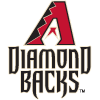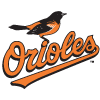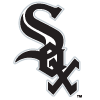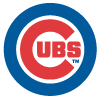This article is part of our MLB Barometer series.
Outside of the new rules, the biggest storyline of the fantasy baseball season so far has been the seemingly endless string of very talented rookies who have arrived throughout the first half. It's not just the talent level of this year's arrivals that has been significant, it's the fact that they're all here already. That's caused a scramble for the latest big name seemingly every weekend in FAAB bidding. In my TGFBI league, for example, each of the last nine weeks has seen at least one rookie go for more than $100 (out of a $1,000 budget).
The wave of exciting rookies has also meant I've spent more time thinking about my remaining FAAB dollars than ever before, trying to figure out when I could justify going all-in on a pickup and when I couldn't afford to do so. I haven't come up with any conclusive answers, but I'll share my thought process in this week's introduction.
We'll start with the simplest approach. With 27 FAAB periods in a season, you could treat each of them equally, dividing up your budget into 27 equal portions. That gives you $37 per week in leagues with a $1,000 budget, or $3.7 per week in leagues with a $100 budget. If you use this approach, you don't need to stick strictly to those numbers (you'd never land a single marquee player if you did), but you'd want to stick roughly within those limits at all points of the season. We've had 12 FAAB
Outside of the new rules, the biggest storyline of the fantasy baseball season so far has been the seemingly endless string of very talented rookies who have arrived throughout the first half. It's not just the talent level of this year's arrivals that has been significant, it's the fact that they're all here already. That's caused a scramble for the latest big name seemingly every weekend in FAAB bidding. In my TGFBI league, for example, each of the last nine weeks has seen at least one rookie go for more than $100 (out of a $1,000 budget).
The wave of exciting rookies has also meant I've spent more time thinking about my remaining FAAB dollars than ever before, trying to figure out when I could justify going all-in on a pickup and when I couldn't afford to do so. I haven't come up with any conclusive answers, but I'll share my thought process in this week's introduction.
We'll start with the simplest approach. With 27 FAAB periods in a season, you could treat each of them equally, dividing up your budget into 27 equal portions. That gives you $37 per week in leagues with a $1,000 budget, or $3.7 per week in leagues with a $100 budget. If you use this approach, you don't need to stick strictly to those numbers (you'd never land a single marquee player if you did), but you'd want to stick roughly within those limits at all points of the season. We've had 12 FAAB periods thus far, meaning you should have 55 percent of your budget remaining using that method.
Of course, it's probably not correct to treat each week equally. If you added a player during the first bidding period of the year, you'd have him for the entire season. That's 27 times as long as you'd have him if you added him in the final FAAB period. There's a case, then, to weight the first period 27 times as much as the last one, while rating the second period 26 times as much, the third period 25 times as much, and so on. That means that instead of spending $37 per week, you'd aim to spend around $71 in the first week, around $40 per week this time of year, and just $3 by the final week of the season.
If you're following that method, you should have approximately $317 left (out of a $1,000 budget) at this point of the year. I've largely been sticking with this approach in my mixed leagues, as I'm sitting on $361 in TGFBI and $302 in GLARF. My leaguemates on the whole seem to be thinking similarly, averaging $333 remaining across those two leagues. Naturally, there's plenty of variation in individual budgets, with one leaguemate having spent $990 and another yet to spend a penny, but we collectively converge very close to the mark suggested by this second method.
The variation may be a reflection that there's as much art as there is science with this sort of thing. Sometimes you have to address problems as they come up and deal with the fallout later. Sometimes an entire league spends an outlier amount of money early on, affecting bids the rest of the way. Additionally, format wrinkles can override this approach to small or large degrees. In leagues with $100 budgets and no $0 bids allowed, you'll want to preserve at least an extra buck or two per week down the stretch just to make sure you can field a team in case of emergency. In keeper leagues where the winning FAAB bid also sets a player's salary for next season, you may want to manage your budget with more long-term considerations in mind. And in AL-only and NL-only leagues, preserving a large share of your budget to snap up the biggest midseason trade acquisitions who entered your league's player pool is often a wise approach.
Still, I hope that offers something of a guideline as to how much FAAB money you should look to conserve as we head toward the midpoint of the season. If you've blown through well over half your budget already, you're probably still in fine shape. For now, we'll move on to a handful of players who have been notably hot or cold recently. It's a rookie-heavy set of names, keeping with the theme of the week, starting with the guy who caused the biggest spending spree this past weekend.
RISERS
 Elly De La Cruz, SS/3B, Reds: There hasn't been a player get called up who's as flashy and athletically impressive as De La Cruz since — well, since Oneil Cruz not too long ago, I suppose, but other than him, I'm not sure you're going to find many more infielders this giant who possess this combination of power and speed. De La Cruz hasn't qualified for many leaderboards yet, making his Statcast sliders look comically straightforward:
Elly De La Cruz, SS/3B, Reds: There hasn't been a player get called up who's as flashy and athletically impressive as De La Cruz since — well, since Oneil Cruz not too long ago, I suppose, but other than him, I'm not sure you're going to find many more infielders this giant who possess this combination of power and speed. De La Cruz hasn't qualified for many leaderboards yet, making his Statcast sliders look comically straightforward:
The 21-year-old is calling himself the fastest man in the world already, and at least in the baseball world, he might be right. He's already swiped five bags in eight games and hit a 458-foot homer. Oh, and he's also a switch-hitting shortstop. Of course, as with Oneil Cruz, De La Cruz pairs his absurd athleticism with significant contact concerns, and his 38.9 percent strikeout rate through seven games does little to assuage them. That means the young phenom could certainly have multiple weeks where he does little more than hurt your batting average, and there's a chance he has enough of those weeks that he fails to justify the massive amount of FAAB dollars spent on him over the weekend. The rest of De La Cruz's tools are so loud, however, that he could be a good or even great player even if his whiffs are just barely tolerable.
 Corbin Carroll, OF, Diamondbacks: Let's start this section with proof that Carroll is in fact human:
Corbin Carroll, OF, Diamondbacks: Let's start this section with proof that Carroll is in fact human:
LOL OH NO, Corbin Carroll pic.twitter.com/HigNOaprjj
— NBC Sports Philadelphia (@NBCSPhilly) June 14, 2023
While he earned himself a permanent place on blooper reels with that mental mistake, it's just about the only thing that hasn't gone Carroll's way in recent weeks. If Carroll failed to improve on the .275/.371/.490 slash line (132 wRC+) that he carried through his first 45 games, no one would have grounds to complain, as that's already an excellent showing from a rookie, even one as highly touted as Carroll. He's turned on the gas since then, however, hitting .392/.458/.824 with seven homers and six steals in 19 games. That's brought his season slash line up to .313/.398/.599, numbers that rank sixth, ninth and fourth among qualified hitters. His 166 wRC+ ranks third among qualified hitters, and when you toss in his strong outfield defense as well as his work on the basepaths (19 steals, tied for fifth in MLB), you get his league-leading 3.5 fWAR. That last number isn't one that has direct fantasy relevance, but it gives an idea of the sort of player we're talking about: not merely a promising rookie who packs more punch in his small frame than you might expect, but someone who might already be one of the very best players in the entire league.
 Gunnar Henderson, 3B, Orioles: Henderson showed promise with a .788 OPS in 34 games in his debut last season, driving his draft price up to 103 in the NFBC Main Event, eighth-highest at the hot corner. As late into the season as May 21, Henderson was hitting just .192/.331/.354, making that price look significantly inflated. Since then, he's been on an absolute tear, slashing .377/.421/.774 with six homers and three steals in 16 games. Zoom in even more and the numbers get even better, as he's homered in three straight games and has 11 hits in his last four, raising his batting average by 40 points. The curious part of Henderson's hot streak is that it comes as his walk rate has gotten significantly worse. He hasn't trimmed his slightly worrisome strikeout rate, either, but being aggressive has seemingly allowed him to tap into more power:
Gunnar Henderson, 3B, Orioles: Henderson showed promise with a .788 OPS in 34 games in his debut last season, driving his draft price up to 103 in the NFBC Main Event, eighth-highest at the hot corner. As late into the season as May 21, Henderson was hitting just .192/.331/.354, making that price look significantly inflated. Since then, he's been on an absolute tear, slashing .377/.421/.774 with six homers and three steals in 16 games. Zoom in even more and the numbers get even better, as he's homered in three straight games and has 11 hits in his last four, raising his batting average by 40 points. The curious part of Henderson's hot streak is that it comes as his walk rate has gotten significantly worse. He hasn't trimmed his slightly worrisome strikeout rate, either, but being aggressive has seemingly allowed him to tap into more power:
| Period | BB% | K% | Swing % | Barrel % | Hard Hit % | OPS |
|---|---|---|---|---|---|---|
| Through May 12 | 19.8 | 29.4 | 37.9 | 9.5 | 42.9 | .651 |
| Since May 12 | 5.7 | 29.5 | 46.1 | 19.3 | 61.4 | 1.050 |
In isolation, would I prefer a player who walked 5.7 percent of the time to one with a 19.8 percent walk rate? Absolutely not. But Henderson serves as a reminder that there's no one-size-fits-all approach. The fact that a hitter his age was able to make an adjustment on the fly and with great success is quite encouraging and gives confidence in his ability to tackle the next set of challenges that come his way.
 Bobby Miller, SP, Dodgers: Miller is quickly rising up the ranks both among rookie pitchers named Miller and among rookie pitchers trying to break into the Dodgers rotation. Mason and Bryce delivered some early excitement among the former group, and Michael Grove and Gavin Stone got the first chances at Dodger Stadium, but Miller looks better than all four of those young arms by a reasonable margin thus far. Through four outings, the 24-year-old righty owns a 0.78 ERA and 0.83 WHIP, and while his .211 BABIP and 89.5 percent strand rate indicate regression is coming, seeing his ERA rise to meet his 3.58 SIERA would hardly count as a disappointment. He's combined an average walk rate (8.0 percent) with a strong strikeout rate (26.4 percent) and groundball rate (54.4 percent).
Bobby Miller, SP, Dodgers: Miller is quickly rising up the ranks both among rookie pitchers named Miller and among rookie pitchers trying to break into the Dodgers rotation. Mason and Bryce delivered some early excitement among the former group, and Michael Grove and Gavin Stone got the first chances at Dodger Stadium, but Miller looks better than all four of those young arms by a reasonable margin thus far. Through four outings, the 24-year-old righty owns a 0.78 ERA and 0.83 WHIP, and while his .211 BABIP and 89.5 percent strand rate indicate regression is coming, seeing his ERA rise to meet his 3.58 SIERA would hardly count as a disappointment. He's combined an average walk rate (8.0 percent) with a strong strikeout rate (26.4 percent) and groundball rate (54.4 percent).
Remembering Bryce Miller's dominant early stretch in which he recorded a 1.15 ERA in five outings before hitting a wall and giving up 15 over his next two outings might make you reluctant to buy into Bobby Miller's success, but the two stretches have a pair of notable differences. First, Bryce's opponents ranked an average of 19th by team wRC+, with only Atlanta ranking in the top half, while Bobby's opponents ranked 14th on average. Second, Bryce used his fastball 71 percent of the time over that stretch, followed by a slider at 15 percent and a curveball and changeup in single digits. Bobby has a much more diverse repertoire, using his fastball 49 percent of the time and giving double-digit usage to all three of his slider, curve and change, giving him the ability to adjust from start to start.
 Michael Kopech, SP, White Sox: For much of the season, Kopech looked more likely to move to the bullpen than to become an effective starter. His 5.74 ERA and 1.56 WHIP through his first eight outings didn't look under-served, as he combined a slightly below-average strikeout rate (21.4 percent) with an awful 14.6 percent walk rate. A switch flipped in dramatic fashion in mid-May, however, as he now owns a 1.72 ERA and 0.67 WHIP in his last five outings. Before getting too excited about his current hot streak, it's worth noting that four of his opponents in this run — the Royals, Guardians, Tigers and Marlins — rank in the bottom third of the league in team wRC+, and the lone team that doesn't (the Angels) scored four runs in 4.2 innings. Even in that Angels outing, however, he had a 10:2 K:BB, and his overall 37.6 percent strikeout rate and 4.3 percent walk rate over his recent run are both outstanding marks. It will take a few good starts against quality lineups to really start to trust Kopech, but he's at minimum interesting again and could be at the start of something much more.
Michael Kopech, SP, White Sox: For much of the season, Kopech looked more likely to move to the bullpen than to become an effective starter. His 5.74 ERA and 1.56 WHIP through his first eight outings didn't look under-served, as he combined a slightly below-average strikeout rate (21.4 percent) with an awful 14.6 percent walk rate. A switch flipped in dramatic fashion in mid-May, however, as he now owns a 1.72 ERA and 0.67 WHIP in his last five outings. Before getting too excited about his current hot streak, it's worth noting that four of his opponents in this run — the Royals, Guardians, Tigers and Marlins — rank in the bottom third of the league in team wRC+, and the lone team that doesn't (the Angels) scored four runs in 4.2 innings. Even in that Angels outing, however, he had a 10:2 K:BB, and his overall 37.6 percent strikeout rate and 4.3 percent walk rate over his recent run are both outstanding marks. It will take a few good starts against quality lineups to really start to trust Kopech, but he's at minimum interesting again and could be at the start of something much more.
FALLERS
 Spencer Strider, SP, Atlanta: Perhaps including Strider on this list is unfair. He hasn't been good over his last two starts, giving up 13 runs in nine innings, including five homers, but it's just two starts. He even managed a 14:4 K:BB across those two outings, so it's clear he's not totally cooked. But for someone who had become the consensus top pitcher in the league, at least according to the Memorial Day second chance drafts, two consecutive outings like this are worth taking note of. Particularly worrisome is Strider's fastball velocity, which averaged 98.1 mph last season and 97.2 mph through his first 12 starts of this year. He dipped to 96.0 mph on June 8 against the Mets, and while he crept back to 96.6 mph Wednesday against the Tigers, he allowed homers to Miguel Cabrera and Eric Haase on sub-96 mph fastballs. A dip in velocity would be worrisome for any pitcher, but it's even more of a worry for Strider given his uniquely small repertoire. He remains almost exclusively a fastball/slider pitcher, turning to his changeup just 6.1 percent of the time, and it's reasonable to doubt that he can be the elite pitcher we're used to seeing if his fastball suddenly becomes unremarkable.
Spencer Strider, SP, Atlanta: Perhaps including Strider on this list is unfair. He hasn't been good over his last two starts, giving up 13 runs in nine innings, including five homers, but it's just two starts. He even managed a 14:4 K:BB across those two outings, so it's clear he's not totally cooked. But for someone who had become the consensus top pitcher in the league, at least according to the Memorial Day second chance drafts, two consecutive outings like this are worth taking note of. Particularly worrisome is Strider's fastball velocity, which averaged 98.1 mph last season and 97.2 mph through his first 12 starts of this year. He dipped to 96.0 mph on June 8 against the Mets, and while he crept back to 96.6 mph Wednesday against the Tigers, he allowed homers to Miguel Cabrera and Eric Haase on sub-96 mph fastballs. A dip in velocity would be worrisome for any pitcher, but it's even more of a worry for Strider given his uniquely small repertoire. He remains almost exclusively a fastball/slider pitcher, turning to his changeup just 6.1 percent of the time, and it's reasonable to doubt that he can be the elite pitcher we're used to seeing if his fastball suddenly becomes unremarkable.
 Anthony Volpe, SS, Yankees: The good? The Yankees say they aren't thinking about demoting Volpe to Triple-A. The bad? Just about everything else for the struggling rookie. The 22-year-old debuted at the start of this season with considerable fanfare, but with each passing week, that debut looks more and more premature. Volpe's disappointing .236/.313/.404 line and 30.3 percent strikeout rate at the Triple-A level last season were mostly written off due to the fact that they came in just 22 games, but they now look like a clear sign that Volpe still has a meaningful amount of development left to do. His strikeout rate through his first 68 MLB games is an identical 30.3 percent, and his slash line sits at .191/.264/.357, good for a 71 wRC+. His slash line drops to a pitiful .132/.155/.265 if you zoom in on just his last 21 games. Volpe's nine homers and 14 steals put him on pace for 21 and 33, respectively, over the course of the full season, but if his bat continues to bottom out, he isn't going to play often enough to get close to those totals. Toss in the fact that Oswald Peraza is hitting .306/.377/.581 for Triple-A Scranton/Wilkes-Barre and has a stronger defensive reputation, and it's hard to see Volpe keeping the job much longer unless he shows signs of life soon.
Anthony Volpe, SS, Yankees: The good? The Yankees say they aren't thinking about demoting Volpe to Triple-A. The bad? Just about everything else for the struggling rookie. The 22-year-old debuted at the start of this season with considerable fanfare, but with each passing week, that debut looks more and more premature. Volpe's disappointing .236/.313/.404 line and 30.3 percent strikeout rate at the Triple-A level last season were mostly written off due to the fact that they came in just 22 games, but they now look like a clear sign that Volpe still has a meaningful amount of development left to do. His strikeout rate through his first 68 MLB games is an identical 30.3 percent, and his slash line sits at .191/.264/.357, good for a 71 wRC+. His slash line drops to a pitiful .132/.155/.265 if you zoom in on just his last 21 games. Volpe's nine homers and 14 steals put him on pace for 21 and 33, respectively, over the course of the full season, but if his bat continues to bottom out, he isn't going to play often enough to get close to those totals. Toss in the fact that Oswald Peraza is hitting .306/.377/.581 for Triple-A Scranton/Wilkes-Barre and has a stronger defensive reputation, and it's hard to see Volpe keeping the job much longer unless he shows signs of life soon.
 Jarren Duran, OF, Red Sox: Duran disappointed in his first two partial MLB seasons, hitting .219/.269/.354 in 91 games in 2021 and 2022, and he failed to break camp in the big leagues this year. He earned a roster spot by mid-April due to Adam Duvall's fractured wrist, however, and he seemed to be finally turning a corner, hitting .361/.418/.588 in his first 28 games. A clearly unsustainable .464 BABIP inflated those numbers, though, and he's since gone on to slash .178/.231/.233 across his last 22 games. A drop in BABIP to .283 accounts for some of that change, but he also struck out 34.6 percent of the time, well above the 24.5 percent strikeout rate he'd managed up to that point. The Red Sox seemingly didn't buy into his hot streak, as he's fallen into a part-time role since Duvall's return from the injured list. A platoon between the pair theoretically makes sense, with Duran getting the majority of the starts as the left-handed hitter, but that's not Boston's plan. The Red Sox have faced five righties since Duvall's return, with Duran starting just once in center and once in left.
Jarren Duran, OF, Red Sox: Duran disappointed in his first two partial MLB seasons, hitting .219/.269/.354 in 91 games in 2021 and 2022, and he failed to break camp in the big leagues this year. He earned a roster spot by mid-April due to Adam Duvall's fractured wrist, however, and he seemed to be finally turning a corner, hitting .361/.418/.588 in his first 28 games. A clearly unsustainable .464 BABIP inflated those numbers, though, and he's since gone on to slash .178/.231/.233 across his last 22 games. A drop in BABIP to .283 accounts for some of that change, but he also struck out 34.6 percent of the time, well above the 24.5 percent strikeout rate he'd managed up to that point. The Red Sox seemingly didn't buy into his hot streak, as he's fallen into a part-time role since Duvall's return from the injured list. A platoon between the pair theoretically makes sense, with Duran getting the majority of the starts as the left-handed hitter, but that's not Boston's plan. The Red Sox have faced five righties since Duvall's return, with Duran starting just once in center and once in left.
 Matt Mervis, 1B, Cubs: Neither Cubs fans nor fantasy players were particularly happy when the Cubs brought in Trey Mancini, Eric Hosmer and Edwin Rios over the winter, pushing Mervis all the way down to fourth on the depth chart at first base despite the fact that he seemed to have little left to prove in the minors. While none of those signings have looked good so far — Mancini's .643 OPS is the best of the group, while Hosmer was released before the end of May — Mervis hasn't been any better. Through 26 games, he's hitting .170/.240/.295 with three homers. It hasn't been all bad, as his 14.3 percent barrel rate and 50.0 percent hard hit rate are both strong marks, but his 33.3 percent strikeout rate has meant he's not getting the chance to show off his strength often enough. That doesn't line up with his 15.3 percent strikeout rate at the Triple-A level over the past two seasons, but it does line up with his scouting reports, which suggested his hit tool could be a problem. The more he struggles, the more it looks like the fact that the Cubs brought in so many alternatives was a red flag to which we should have paid more attention. Their lack of faith in Mervis matches his poor numbers thus far.
Matt Mervis, 1B, Cubs: Neither Cubs fans nor fantasy players were particularly happy when the Cubs brought in Trey Mancini, Eric Hosmer and Edwin Rios over the winter, pushing Mervis all the way down to fourth on the depth chart at first base despite the fact that he seemed to have little left to prove in the minors. While none of those signings have looked good so far — Mancini's .643 OPS is the best of the group, while Hosmer was released before the end of May — Mervis hasn't been any better. Through 26 games, he's hitting .170/.240/.295 with three homers. It hasn't been all bad, as his 14.3 percent barrel rate and 50.0 percent hard hit rate are both strong marks, but his 33.3 percent strikeout rate has meant he's not getting the chance to show off his strength often enough. That doesn't line up with his 15.3 percent strikeout rate at the Triple-A level over the past two seasons, but it does line up with his scouting reports, which suggested his hit tool could be a problem. The more he struggles, the more it looks like the fact that the Cubs brought in so many alternatives was a red flag to which we should have paid more attention. Their lack of faith in Mervis matches his poor numbers thus far.










